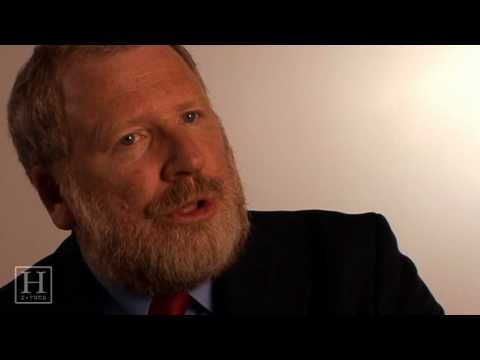A regulator and market expert look back on the bank bailout five years later
Post on: 16 Сентябрь, 2015 No Comment

This is the first in a series looking back on the Troubled Asset Relief Program (Tarp) – the government intervention that sought to calm the financial crisis and restart the economy in 2008.
Sheila Bair: ‘We should never want to use Tarp again’
Going into the 2008 financial crisis, we didn’t have all the tools that we needed to put financial institutions into an orderly, government-run bankruptcy process. We had such a process to resolve FDIC-insured banks, but we didn’t have a process to deal with the AIGs, big investment banks, or the megabanks like Citigroup. With limited tools, we had limited choices.
That said, we could have been more muscular about Tarp’s requirements, or about cracking down on weaker firms. By 2009, we had stabilized the system – and that’s when we could have started enforcing accountability. We should have forced the banks to clean up their balance sheets, take their losses, and get out there to lend, which is what the economy needed to restart. That was the original idea behind Tarp, and we didn’t do that.
We never forced them to clean up their assets, probably because the losses would have been massive. The government was too focused on making the banks profitable again, so we didn’t make them eat their losses. The rationale went that restored profitability would return confidence to the system. Instead, it brought public resentment and anger – and didn’t help the economy.
Banks with a lot of troubled assets on their books nurse those assets. They play it safe and don’t go out and lend. We should never want to use Tarp again; institutions should stand on their own two feet. If they fail, they fail.
Now, under Dodd-Frank’s Title II. (which gives the government orderly liquidation authority), government capital investments are banned and bailouts are banned.
Shareholders and unsecured creditors take the losses if a bank fails, as they should. The government has the power to restructure a failed institution; to force it to deal with troubled assets; to break it up and downsize it; and to make it healthy enough to contribute to the real economy.
There were other forms of support, too. The FDIC was asked by the Federal Reserve and the Treasury to guarantee unsecured debt – debt without collateral – for these large financial institutions. We launched the Temporary Liquidity Guarantee Program which helped keep the system liquid. Large financial institutions borrowed heavily in the short-term credit markets, and they were having trouble renewing expired debt. We helped them access enough funding to remain operational. It was a risk, but it worked.
Combined with Tarp and the Fed’s trillions in lending programs, the government collectively threw a lot of money at the big financial institutions. But Tarp investments used taxpayer money, whereas the FDIC – though backed by the government – obtains its finances by charging banks for deposit insurance. Therefore our program, at least, was met with less controversy.
But the important point remains the same: it’s appropriate in times of system-wide stress for government to intervene and make support available. Capital investments – like Tarp – are not a good idea. Government shouldn’t take on ownership stakes in banks; it’s not consistent with a market-based system.
I don’t want anyone who’s big to have a giant put on taxpayers. It’s problematic for big financial firms think that they can profit by taking a lot of risks, and if they lose money they can put it on taxpayers. There’s no more damaging and destabilizing message the government can send than this idea that if you’re big, the government will get you out of trouble.
Is the financial system safe? I think it’s safer than it was, but not as safe as it should be.
Sheila Bair is the former chair of the FDIC and the author of Bull by the Horns: Fighting to Save Main Street from Wall Street and Wall Street from Itself. She is currently the chair of the Systemic Risk Council. co-founded by the Pew Charitable Trusts and the CFA Institute. This has been reproduced as told to Heidi Moore.
Guy LeBas: Tarp provided a much needed shot of confidence
This week marks five years since Congress passed (on the second vote) and then-President Bush signed into law the Troubled Asset Relief Program, more affectionately known as Tarp.

Originally envisioned as a fund that would purchase so-called toxic waste from bank balance sheets, the program quickly morphed into a mandatory capital injection for the nation’s largest banks, an optional source of capital for other healthy depositories, and a bailout vehicle for automakers.
Tarp has evoked a range of responses, but the initial round of capital injections clearly provided a much-needed shot of confidence to a financial system at legitimate risk of collapse.
It’s hard to overestimate the importance of confidence in the contemporary financial system. It underlies nearly every transaction, contract, or exchange of funds. In a financial society that crosses borders, our traditional form of confidence – personally knowing those to whom you’re transferring cash –simply can’t exist.
Financial technology essentially forced the development of a new form of trust: institutional confidence. The failure and sale of Bear Stearns. the failure of Lehman, and the hint of similar risks elsewhere threatened that system of institutional confidence which the global markets required to function. Tarp was the first step in restoring that institutional confidence.
The need for Tarp in 2008 was quite clear, but the program’s legacy is essentially non-existent. From a market perspective, Tarp staunched the bleeding of institutional confidence and played a clear role in re-laying the foundations for a 54% rebound in the S&P 500 in the last five years. From a cost perspective, Tarp as an investment has returned about $39bln in net profits, with $54bln still outstanding, according to ProPublica .
Both of these measures are now five years ex post facto, and don’t do justice to the environment under which it was conceived. Moreover, the Dodd-Frank Act ostensibly banned all future Tarp-like bailouts, though it stands to reason that, in extreme circumstances, Congress could simply eliminate that provision.
In assessing the ultimate need and value of Tarp, Treasury Secretary Hank Paulson summed up the situation in a way that captured the financial zeitgeist of 2008:
Government owning a stake in any private US company is objectionable … yet the alternative of leaving businesses and consumers without access to financing is totally unacceptable.
Guy LeBas is the chief fixed income strategist for Janney Montgomery Scott .














